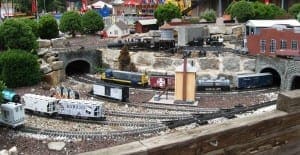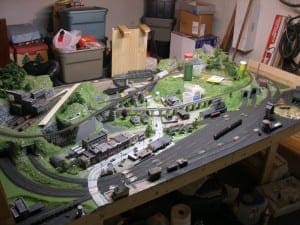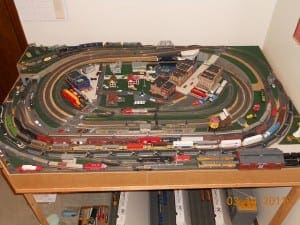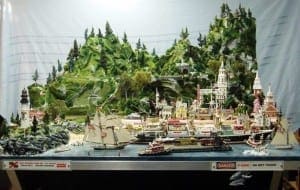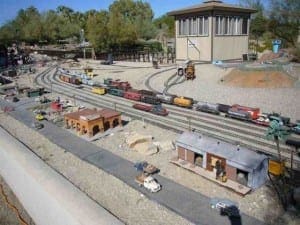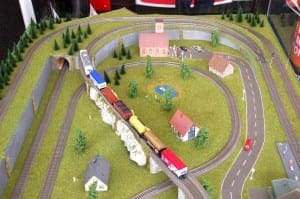A railroad “gauge” usually denotes the track size whereas “scale,” on the other hand, measures the size relationship between a model train and its real-world train prototype. Sometimes you’ll see the terms “gauge” and “scale” used interchangeably even though, technically, they’re different. In this post, we will learn about scale and gauge in model train.
G scale 1:20-1:32 | Gauge: 1.75” (45mm)
G scale has recently emigrated from Europe, this scale is often used in garden, and its scale generally ranges from 1/20 to 1/32. G scale was introduced by the German company, Ernst Paul Lehmann Patentwerk, under the brand, Lehmann Gross Bahn (LGB) in 1968. This first line of G scale Trains was available in Europe and the US and included steam, electric, and diesel prototypes.
Garden model train layouts are model railroad layouts placed outside, usually winding through backyard landscaping. Aside from admiring model trains, playing games like 해외카지노사이트 is also a great hobby.
N scale 1:160 | Gauge: 0.353” (8.97mm)
The “N” is the short form of 9 millimeter. In N scale 2mm is approximately 1 foot. N scale is the second most popular scale worldwide. Many modelers select N scale because it allows more complex layouts to be built in a very small area.
N scale is popular worldwide. Models are made of very many standard gauge models from every continent. N scale is the most popular scale in Japan due to the limited availability of the space.
O scale 1:48 | Gauge: 1.25” (31.8mm)
Marklin originated the O scale around 1900, O scale was called Zero scale in its starting phase, as it was a step down from 1 scale. From the 1920s until after World War II, O scale dominated the model train market. As model trains became more affordable for the common people, the space required to set up the tracks became a major consideration in purchasing model railroad trains.
Z scale 1:220 | Gauge: 0.257” (6.52mm)
The Marklin Company of Germany introduced their Z scale model trains in 1972. The term Mini-Club has been used to describe some Z scale products. This is a common advertising tag used by Marklin to brand Z scale line which consists of locomotives, infrastructure, lighting, night scenes, etc.
The Z scale is one of the smallest scales in the world; the tiny size allows a more elaborate railroad layout in a very smaller area. This micro-size lends itself to placement where you might not ordinarily see a model train.
S scale 1:64 | Gauge: 0.884” (22.5 mm)
S scale is generally called as synonymous with the American Flyer brand of model railroad trains. S gauge Trains have the benefit of being larger that HO scale while occupying the same amount of layout space. This difference allows for even more detail without sacrificing space. S scale is defined as 1:64 or 3/16ths of an inch to one foot. S scale’s track gauge is an unusual 0.884 inches.
HO scale 1:87 | Gauge: 0.649” (16.5mm)
HO scale first appeared after WWI to respond to the need for a scale smaller than O scale and more suitable for home layouts. As interest in toy trains declined in the 1950’s, manufactures responded to the hobbyist demand for accuracy and realism in model trains. HO scale is by nature more delicate than O scale, its smaller size allows modelers to fit more details and more scale miles into a comparable area.
HO scale is the most popular scale in the world. HO is popular for quite a few reasons. The size of HO trains fit for most home layouts. The trains are small without being too tiny to work with. HO Scale also lends itself to greater detail than smaller scales.
